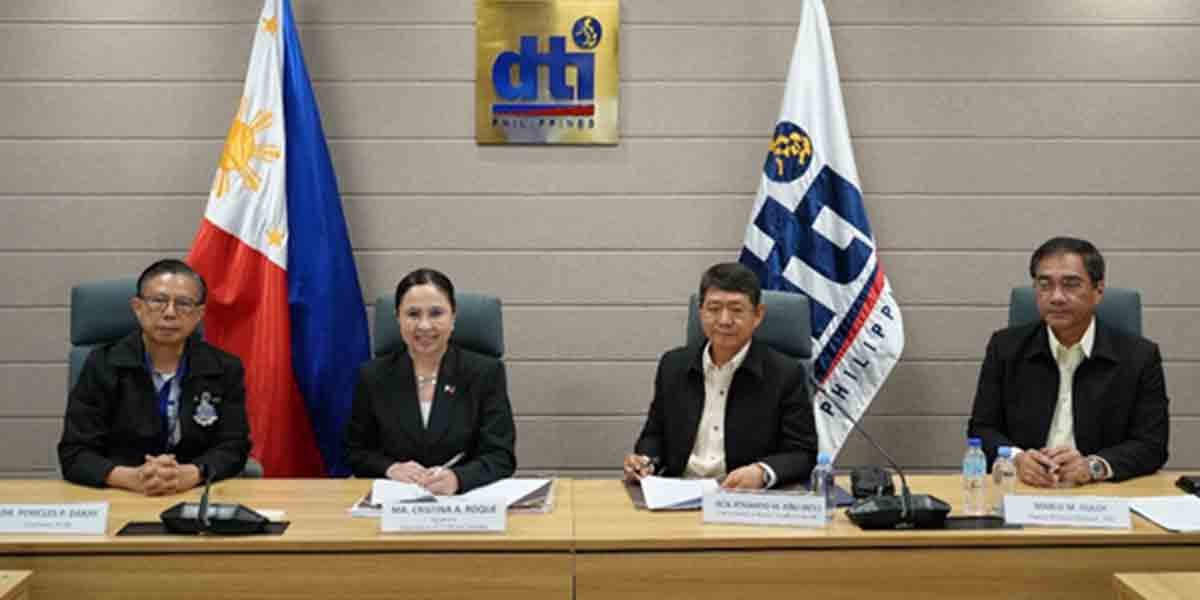The Philippines’ agricultural sector can further improve if we pursue parallel efforts in fixing the structural issues of the sector and join the Regional Comprehensive Economic Partnership (RCEP) agreement, the National Economic and Development Authority (NEDA) said.
Socioeconomic Planning Secretary Karl Kendrick T. Chua, along with Department of Trade and Industry (DTI) Secretary Ramon Lopez and officials from NEDA, DTI, and the Department of Agriculture dialogued with members of the Samahang Industriya ng Agrikultura (SINAG) on Wednesday to listen to their concerns on the sector and on the country’s participation in the RCEP agreement. The government team also explained the benefits of the RCEP for the sector and the entire country.
Chua acknowledged the sector’s concerns on importation but explained that importation is a temporary measure as we improve agricultural productivity. He also explained the bigger benefits that the agriculture sector and the entire country can reap if the Philippines joins the RCEP.
“In 1978, the population of the Philippines was around 46 million. Today, the population is 110 million. However, our land area is not going to increase. Importation is part of the temporary solution to address hunger and food shortage while we improve agricultural productivity,” said Chua.
Chua recognized that there are other problems in the agriculture sector that require urgent solutions but they can be addressed in parallel, rather than in opposition to the RCEP.
“The best farmers who can mechanize, improve their productivity, and consolidate land operation, win and become more productive. However, the trade deficit is a real problem, it means we are not competitive. The solution there is not to stop RCEP but to address the root causes of the inefficiency of the agriculture sector,” according to Chua.
The NEDA chief further explained that the issue with the agriculture sector is not about funding but also how best to allocate resources to improve productivity.
“Even if we have funds for the sector, if we misuse it or don’t allocate it properly, or if we put it in production inputs only and not support services or mechanization or high-yielding seeds, we can spend the same amount and achieve little results. Our support to agriculture will have to change from providing subsidies, which is what we have done for decades, to providing public goods and support services. That is really how I think we can improve productivity,” said Chua.
The RCEP is a free-trade agreement among the ten members of the Association of Southeast Asian Nations (ASEAN), along with China, Japan, South Korea, Australia, and New Zealand. This covers roughly 50.4 percent of the Philippines’ export markets and 67.3 percent of the country’s import sources.
Joining RCEP will preserve 98.1 percent of tariff lines, which corresponds to 228 commodities or USD 16.9 billion of imports. Only 15 agricultural commodities representing 33 tariff lines will see lower tariff rates. They account for only 1.9 percent of total tariff lines and only 132 million dollars or 0.8 percent of total agricultural imports. These commodities will be affected since RCEP rates for these items are generally lower than the most favored nation rate and lower than the ASEAN+1 rate.
Chua also highlighted the Rice Tariffication law as a model that works not only for farmers but for all consumers. Chua said that the farmers gain full benefits from the law with higher yields compared to those in 2017 resulting in increased palay production at 20 million metric tons. At the same time, consumers, including farmers themselves, have enjoyed lower rice prices.
“The economic team has pushed for the passage of three liberalization laws that will bring in a lot of foreign direct investments. But if we limit our intervention by not joining RCEP, then we will not reap the full benefits of all the reforms that we have pushed and are pushing for. By not joining RCEP, we lose out on so many other opportunities. Today, countries are looking for the next best source of agricultural and non-agricultural products because of the Russia-Ukraine conflict. Time is of the essence, and we do not have time to waste,” Chua said.
According to the Philippine Institute for Development Studies (PIDS) in December 2021, participating in the RCEP is expected to provide a 10.47 percent increase in the country’s exports and a 2.02 percent increase in real gross domestic product (GDP). Factors that enable this include the lower transaction costs as a result of wider sourcing of raw materials for sectors in manufacturing and inputs for agricultural production.
President Rodrigo Duterte already ratified the RCEP agreement on September 2, 2021. However, it still requires the approval of Senate Resolution No. 963, pursuant to the constitutional requirement that this needs the concurrence of the Senate.
“We hope the Senate will urgently ratify the RCEP this week, given its urgency and large benefits to the country,” said Chua.

















